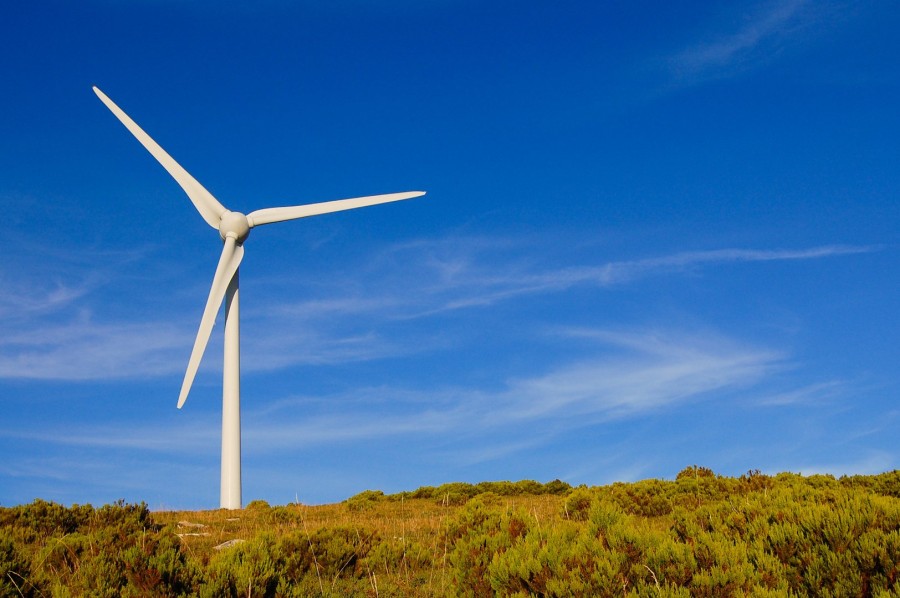Why renewables are better than LNG to replace Russian gas. Le Monde Report

According to an article in Le Monde, the use of renewable energy instead of new gas supplies would be a quicker and cheaper way to replace Russian fuel.
Like a film about double standards in wartime, Russia continues to pay Ukraine, which is tearing apart a "rent" (apparently $ 2 billion in 2020, or around € 1.84 billion) to use its pipelines to the European Union (EU). And the EU countries, which economically sanction Russia and in some cases supply Ukraine with weapons, continue to pay Russian invaders for their gas – 155 billion cubic meters (BCM) in 2021, which is nearly half as many. their gas imports.
The moral dilemma facing the EU can be solved in several ways: Putin could cut supplies; a Middle Eastern or Texan oilman could hire mercenaries to blow up Ukrainian pipelines… and the price of oil and gas at the same time; the Ukrainian government could even, in a desperate move, blow up the pipelines themselves.
Very expensive liquefied gas
But none of the plans announced so far appear to be able to solve this dilemma. On March 25, the European Commission and Washington announced that they could replace 20 MMCs of Russian gas (out of 155) this year with new wind and solar projects. And that in eight years (!) The EU would put an end to Russian gas imports by tripling its wind and solar capacity to 170 MMC. Will there be anything left of Ukraine by then?
On March 24, Joe Biden promised to deliver around 15 MMCs of liquefied natural gas (LNG) to the EU this year. The EU is also looking for alternative sources of LNG and contracting out existing floating regasification plants.
But replacing the relatively cheap gas delivered by a pipeline with a very expensive liquefied gas delivered by a LNG carrier requires the construction of new regasification plants. The Dunkirk plant took six years to build and cost one billion euros. In other words, building more would not help resolve the current crisis in the short term.
The EU plan for energy independence announced on 8 March does not, however, mention a new nuclear power plant to address this crisis. And with good reason: even though the first European EPR reactor in Finland just produced its first 100 MW of electricity in March 2022, the project was launched thirteen years ago, in 2005, and cost around 11 billion euros. instead of the 3.4 billion initially foreseen …
From $ 26 to $ 50 per MWh
The real solution is therefore patently obvious. The fastest and cheapest energy systems to build in a war emergency are wind and terrestrial solar. This is crystal clear in the figures published by investment bank Lazard (“Levelized Cost of Energy, Levelized Cost of Storage, and Levelized Cost of Hydrogen”, October 28, 2021).
Not only are onshore wind turbines the cheapest, at $ 26 to $ 50 per megawatt hour (MWh), but, like solar, they are very quick to build. According to Windeurope.org, the main European trade association that groups together the main wind energy players (Vestas, Orsted, Ziemens-Gamesa, Acciona, Equinor, EDF, Engie …), "a 10 MW wind farm can be easily built in two months. A larger 50 MW wind farm can be built in six months.
Solar takes even less time. In addition, the EU has many of the largest and most important manufacturers of wind turbines, wind farms and power cables.
The most common large-scale solar power has a similar cost to onshore wind, according to Lazard – a range of $ 30 to $ 41 per MWh. In times of war, the best sources of energy are local, with no need for external energy. Like the sun and the wind.
For national security reasons
However, as we have seen, the European Commission is still looking for imported emergency solutions. Yet Lazard gave a low end for the price of natural gas-fired electricity in 2021 of $ 45 to $ 74 per MWh. While generally more expensive than wind or solar, gas can compensate for times when there is no wind or sun.
But Lazard based his analysis on a natural gas price of $ 3.45 / million BTU (British Thermal Unit; 1 MMBtu = 0.293071 MWh), roughly the price in the United States in 2021. But the price paid by the EU upon arrival at the port in Germany in November 2021, before the war, was $ 27.20 / MMBtu, almost eight times higher than in the United States! This cannot be a wartime emergency strategy …
The real emergency solution to replace Russian natural gas on a European scale is, for national security reasons, to build massive onshore wind and photovoltaic plants. And, until we have filled the appropriate gaps, we will have to use existing nuclear power, other gases we can find and, as a last resort, coal.
Political leaders must start behaving like leaders and explain it firmly: we are at war, even if it is not declared, and we must stop trading with the enemy.
(Translated from English by Isabelle Plat; excerpt from eprcomunicazione press review)
This is a machine translation from Italian language of a post published on Start Magazine at the URL https://www.startmag.it/energia/rinnovabili-sostituzione-gas-russo/ on Sun, 17 Apr 2022 06:17:10 +0000.
